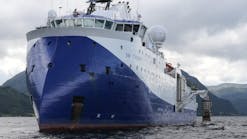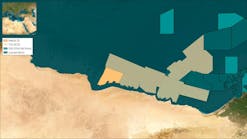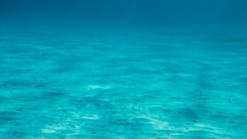Victor Schmidt • Houston
Africa holds 9% of the world's known oil supply and provides 11% of the world's production, according to Stephen Hayes, president of the Corporate Council on Africa. Hayes spoke recently at the Africa: New Plays – New Perspectives symposium in Houston sponsored by the Houston Geological Society and the Petroleum Exploration Society of Great Britain.
Most African producing countries are not aligned with OPEC, with Nigeria as an exception. Problems continue, but there is great mineral wealth to be developed, Hayes said. The region is generating optimism and has grown between 2% and 4% each year for the past 10 years.
Richard Charpentier from the US Geological Survey reviewed the agency's 2000 Assessment of Petroleum Potential report results for Africa's 11 producing provinces. Discovered volumes include almost 24 Bboe in 354 fields and nearly 75 tcf of gas. The USGS estimates that an additional 93 Bboe and 330 tcf remain to be found.
Technical presentations covered the plate tectonic relationships between Africa and South America, as well as the potential of each of the basins along the continental shelf. The salt tectonic style on both sides of the Atlantic is similar when moving from continental slope into deeper water. Salt rollers change to diaper structures, becoming salt canopies before ending in toe-thrust fairways riding on a decollement surface.
Timing of basin development and source rock maturity were common themes, as were discussions of petroleum kitchens and oil windows. All of these topics showed the need for regional studies, which oil companies rarely perform now. The search for "postage stamp" anomalies is the major exploration method today.
Of significant importance is the transformation of some basins from gas-prone to oil producing as more drilling is done. In particular, Richard Bray of Exploration Consultants Ltd. described a newly recognized Tertiary petroleum system in the Douala basin offshore Cameroon. The system has oil source rocks in the Eocene and Oligocene section derived from terrestrial material dep-osited in marine environments.
Following Richard's presentation, Xijan Liu from ConocoPhillips discussed the Coco Marin 1 well in permit PH-77 offshore Cameroon. This well produced oil from a stratigraphic trap formed by incised slope channels. The well produced 3,000 b/d and 1.8 MMcf/d, proving that the Douala basin is not limited to gas and that structural approaches are not the only way to find traps and reserves.
East Africa has many areas that hold oil potential and await explorers. Offshore Mozambique and Madagascar have significant basins but have seen limited drilling. Off northeast Africa, a similar situation exists in the Levantine basin of the eastern Mediterranean where major rift basins lie beneath tabular salt.
Prospective outlook from Appex
The AAPG Prospect and Properties Expo (Appex) kicked off with Perspectives 2003, an overview of the world's petroleum situation, organized by IHS Energy and co-conveners American Association of Geological Societies, Houston Geological Society, Society of Inde-pendent Professional Earth Scientists, and PLS. Aside from the global view, Africa, Asia, Latin America, and North American received attention.
Planned oil supply growth, based on active development projects, will expand world oil production by 9.5 MMb/d. Demand growth at 2% will only require only 6.5 MMb/d of new oil to meet the anticipated need. This potential oversupply situation could be delayed or constrained by OPEC quotas.
Natural gas demand continues to gain with expansion to 152 tcf/yr by 2020, a 78% increase from 2000 levels. Liquid natural gas will feed this growing demand.
Africa continues to attract major investment with good terms and three- to five-year field development times. Asia is being led by China. National oil companies are tilting in-country terms to their favor, while competing in other markets against their licensees. Latin America is limited by its tough fiscal terms. Many companies have shifted investment to other areas due to limited success and political instability. North American imports of oil and gas will continue to grow. Mexico expects to have 15% of its new reserves from deepwater production by 2006.
EXPLORATION
Multi-client surveys
TGS-Nopec is collecting two new surveys: a 2D survey off Greenland and a 3D multi-client survey in the Gulf of Mexico.
The West Greenland programs will add 7,000 km to the company's existing 25,000 km of 2D data in the area, including 3,500 km of data directly over the 2004 leasing round acreage.
The Deep Resolve program in the Gulf of Mexico will collect 3D seismic along the southern additions off Louisiana's outer continental shelf. The program begins with the Ship Shoal and South Timbalier areas to re-examine a number of producing fields.
The Deep Resolve survey (yellow) off Louisiana will use 9,000-m offsets to image deep structures. TGS-Nopec Phase 50 lines are in red.
null
The program is designed to image deeper structures and will have 9,000-m offsets. The M/V Polar Search and the M/V Akademik Shatskiy seismic vessels will acquire the initial 5,000 sq km in a dual-vessel operation.
Norwegian survey
WesternGeco is conducting a Q-Marine 4D survey for Statoil over the Smørbukk South field in the middle Norway section of the North Sea. The goal is to maximize production from the field.
Petrophysical and geophysical modeling indicate that fluid changes were probably not detectable, but that pressure changes from oil production might be visible and could identify which segments of the faulted reservoir were being successfully drained.
TECHNOLOGY
GeoProbe collaboration
Halliburton's Magic Earth released GeoProbe 3.0, the latest version of its visualization and volume interpretation software. According to the company, the software delivers enhanced interpretation capabilities with options for remote execution and collaboration. This release offers the option of sharing a GeoProbe session with multiple users simultaneously. It is available for SGI/Irix, PC/Linux, and Sun/Solaris computer platforms.







